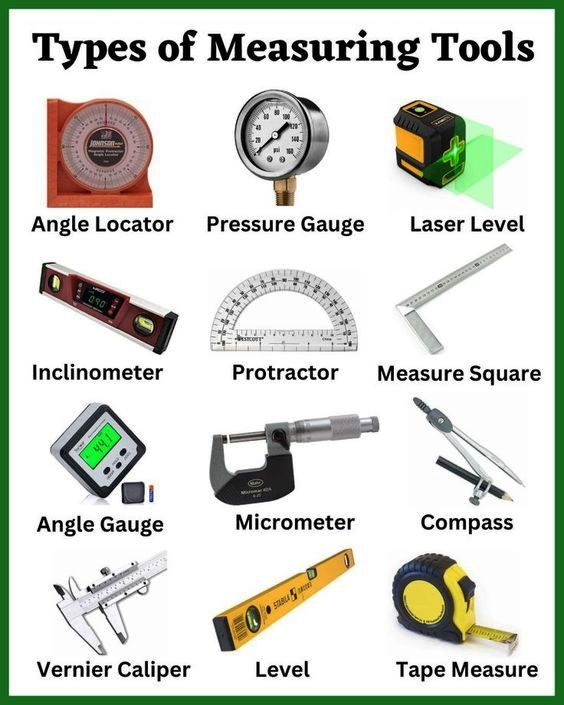Precision Perspectives: Exploring Angle Finder Measuring Tools
2024.04.09 / By hqt
Angle finder measuring tools are devices designed to measure the angles between two intersecting lines or surfaces accurately. Precision in angle measurement is crucial across various fields, including construction, engineering, and scientific research, as even minor deviations can lead to significant errors or inaccuracies in outcomes. Whether it’s ensuring the precise alignment of structural components or accurately determining angles in a medical procedure, the reliability of angle measurements directly impacts the quality and success of the task. In this exploration, we delve into the intricacies of angle finder measuring tools, examining their types, applications, features, and the factors influencing their precision.
Types of Angle Finder Measuring Tools
Angle finder measuring tools come in various forms, each tailored to specific applications and user preferences:
Protractor
- Manual Protractors:
Manual protractors are traditional tools with a semi-circular or full-circle scale marked with degree increments. Users align one arm of the protractor with a reference line and read the angle from the scale where the second arm intersects.
- Digital Protractors:
Digital protractors utilize electronic sensors to measure angles with high precision. They feature digital displays that provide accurate angle readings, often with additional features such as hold, freeze, and zero functions, enhancing usability and convenience.
Bevel Gauge
Bevel gauges are handheld tools used primarily in woodworking and carpentry. They consist of a blade or arm connected to a base with an adjustable angle indicator. Users can set the desired angle by adjusting the blade relative to the base, allowing for precise angle measurements and transfers.
Clinometer
A clinometer, also known as an inclinometer, is a device used to measure the angle of inclination or slope relative to the horizontal plane. It typically consists of a graduated scale and a level or plumb bob to ensure accurate readings. Clinometers find applications in surveying, geology, and outdoor activities such as hiking and skiing.
Inclinometer
Inclinometers are specialized tools used to measure angular deviations from the vertical axis. They are commonly employed in navigation instruments, aircraft instrumentation, and geotechnical monitoring devices to determine the inclination of surfaces or structures.
Goniometer
Goniometers are precision instruments designed for measuring angles in medical and biomechanical applications. They feature two arms with movable protractors or digital displays, allowing for accurate measurements of joint angles and ranges of motion in physical therapy, orthopedics, and ergonomic assessments.

Applications of Angle Finder Measuring Tools
Angle finder measuring tools play a vital role across a wide range of industries and applications, including:
Carpentry and Woodworking
Angle finder tools are indispensable for carpenters and woodworkers in tasks such as cutting precise miter joints, setting bevel angles for shaping wood, and ensuring accurate alignment during assembly. They enable craftsmen to achieve the desired angles for creating intricate joinery and furniture pieces.
Metalworking and Fabrication
In metalworking and fabrication, angle finder tools are essential for accurately measuring and cutting metal components, welding at precise angles, and ensuring the alignment of structural elements in machinery and infrastructure projects. They contribute to the efficiency and quality of metal fabrication processes.
Engineering and Construction
Angle finder measuring tools are indispensable in engineering and construction for layout and design tasks, including determining the slope of surfaces, setting angles for structural components, and ensuring the proper alignment of building elements. They facilitate precision in construction projects, minimizing errors and optimizing structural integrity.
Surveying and Land Measurement
Surveyors rely on angle finder tools for precisely measuring angles and bearings in land surveying and mapping applications. These tools are used to establish property boundaries, determine elevations, and create accurate topographic maps, which are essential for urban planning, infrastructure development, and land management.
Medical Applications
Angle-finder measuring tools find applications in various medical fields, particularly orthopedics, physical therapy, and biomechanics. Goniometers are commonly used to measure joint angles and ranges of motion in diagnosing musculoskeletal conditions, evaluating treatment progress, and designing customized rehabilitation programs.
In astronomy and navigation, angle finder tools are utilized for celestial observations, determining the positions of stars, planets, and other heavenly bodies. Sextants, a type of angle-measuring instrument, have been historically used in maritime navigation to determine the angle between celestial objects and the horizon, aiding in navigation at sea.
Features and Specifications
Angle finder measuring tools vary in their features and specifications, which directly impact their usability and effectiveness in different applications:
Accuracy Levels
Accuracy is a critical factor in angle measurement tools, with higher accuracy levels ensuring more precise results. Tools with tighter tolerance levels and calibrated mechanisms offer greater accuracy, particularly for demanding engineering and scientific research applications.
Measurement Range
The measurement range of angle finder tools refers to the span of angles they can accurately measure. Some tools may have limited ranges suitable for specific tasks. In contrast, others offer wider ranges to accommodate a broader range of applications, from small-scale woodworking to large-scale construction projects.
Ease of Use
User-friendly design features such as intuitive controls, clear markings, and ergonomic grips enhance the ease of use of angle finder tools. Simple calibration procedures and straightforward operation streamline the measurement process, reducing the likelihood of errors and improving efficiency.
Durability and Build Quality
Durability and build quality are essential considerations, particularly for tools used in rugged environments or heavy-duty applications. Sturdy construction materials, robust components, and reliable mechanisms contribute to the longevity and resilience of angle finder tools, ensuring consistent performance even under demanding conditions.
Additional Features
Some angle finder measuring tools may incorporate additional features to enhance functionality and versatility. These may include digital displays for precise angle readouts, built-in memory for storing measurement data, connectivity options for transferring data to external devices, and integrated levels or inclinometers for multi-functional use.
GemRed’s Popular Measuring Tool
The GemRed Universal Digital Bevel Protractor stands out as a highly sought-after measuring tool renowned for its accuracy and adaptability across diverse industries. Here’s a breakdown of its standout features:
Instant Measurement with ABS Mode
This digital protractor delivers swift and precise measurements immediately upon activation, eliminating the need for calibration. This feature ensures users can begin working promptly with no delay.
Constructed with Premium Materials
Crafted entirely from stainless steel, the GemRed Universal Digital Bevel Protractor guarantees durability and resilience, making it resilient in challenging work environments.
Precision Machining
Its manufacturing process involves high-precision machining, guaranteeing top-notch product quality. Users can rely on consistently accurate angle measurements for their tasks.
Large HD-LCD Screen Display
Boasting a spacious high-definition LCD screen, this tool facilitates easy and clear reading of angle measurements, even under varying lighting conditions, ensuring precision in every use.
Inverted Number Display
The display ingeniously flips numbers for overhead work, enabling users to effortlessly read measurements while working above their heads, enhancing convenience and efficiency.
Supplementary Angle Function
Seamlessly switch to measuring supplementary angles, expanding the tool’s versatility to accommodate a broader array of applications, catering to diverse user needs.
Fine Adjustment Knob
Incorporating a fine adjustment knob, this protractor empowers users to achieve precise settings, ensuring accurate measurements tailored to their specific requirements, enhancing overall usability.
Locking Function
With a dependable locking mechanism, users can securely fix measuring data at any angle, ensuring stability and consistency during measurements, even in dynamic work environments.
Future Trends and Innovations
Pioneering Technologies in Angle Measurement
Breakthroughs in sensor technology, exemplified by MEMS (Micro-Electro-Mechanical Systems) and LiDAR (Light Detection and Ranging), stand at the forefront of revolutionizing angle measurement. These innovations offer heightened accuracy, accelerated measurement speeds, and expanded versatility, heralding novel avenues for precise angle determination across diverse applications.
Synergy with Complementary Tools and Devices
Angle measurement tools are increasingly amalgamating with complementary tools and devices, such as smartphones, tablets, and smart glasses. This seamless integration facilitates fluid data transfer, remote monitoring, and immersive augmented reality overlays, empowering users with instantaneous feedback and sophisticated visualization capabilities throughout their measurement endeavors.
Envisaged Enhancements in Accuracy and User-Friendliness
Anticipated advancements prioritize the enhancement of accuracy and user-friendliness within angle measurement tools. This trajectory may encompass the deployment of sophisticated algorithms for error mitigation, refined calibration protocols, and intuitive user interfaces. Furthermore, ergonomic refinements and the incorporation of haptic feedback mechanisms hold promise for augmenting user experiences, rendering angle measurement tasks more streamlined and accessible.
Final Thoughts
Angle finder measuring tools represent indispensable instruments across a multitude of industries, offering precision and versatility in tasks ranging from woodworking to engineering and medical applications. With advancements in technology and continuous innovation, the future holds promising trends such as enhanced accuracy, seamless integration with other devices, and improved user-friendliness. As these tools evolve, they will continue to play a crucial role in facilitating precise angle measurements, ultimately contributing to the efficiency and success of diverse projects and endeavors.
